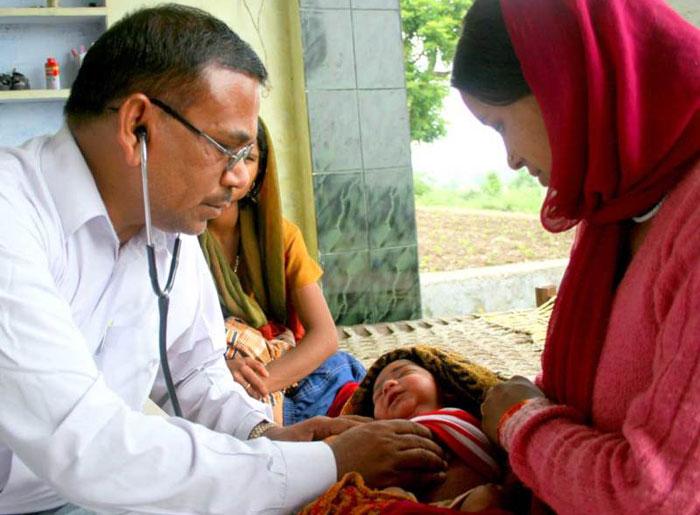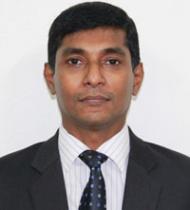
The success story of Sri Lanka’s maternal and child healthcare service delivery and excellent maternal and child health indices is well known and envied in countries in the South East Asian region. Nowhere is this remarkable achievement better reflected than in the drastic reduction of maternal mortality ratios (MMR.) Yet, despite MMR rates plunging, (largely due to ongoing, timely interventions by the Health Ministry), concerns remain over the tragic fact that our mothers continue to die while giving birth. Last year (2015) 113 maternal deaths and 334,841 live births were recorded to report an MMR of 33.7 per 100,000 live births. “In other words 34 women die when 100,000 babies are born alive. A significant reduction is not evident. This is despite a background of 99% antenatal care, 99.9% hospital deliveries and 91% post-partum domiciliary care”. President of the Perinatal Society of Sri Lanka Dr Kapila Jayaratne said highlighting this tragic fact at his recent induction.
In an interview with the Sunday Observer, Dr Jayaratne discussed how healthy life begins in the womb, and how the lives of both mother and baby are closely linked during that journey of life. He also informs us of what interventions have been put in place by the PSSL in their collective effort to reduce and prevent maternal, foetal and newborn deaths in the country.
 Dr Kapila Jayaratne |
Excerpts…
Q: When a woman conceives her body undergoes many physical changes till the time of delivery. What are these changes?
A. Once a baby is conceived, the baby and the mother go through a number of phases. The baby grows and changes dramatically throughout the pregnancy. The mother also goes through many body changes during each stage of pregnancy.
At 28 weeks of gestation, both the mother and the baby enter into a significant phase - third trimester. Foetal development continues during the third trimester. The baby will open his eyes, gain more weight, practice breathing and prepare for delivery.
During this period a number of changes take place in the mother physiologically and several medical complications may develop. Following the intrapartum period, a baby is born. The first seven days of life are crucial for both mother and the newborn.
Q: Why?
A. From 28 weeks to seven days after birth is called the perinatal period. The science dealing with perinatal care, is called perinatology.
Perinatology focuses on managing health concerns of the mother and foetus prior to, during, and shortly after pregnancy. In Sri Lanka this is an area of concern despite our gains in most other areas of health.
Q: Was that the reason for forming the Perinatal Society of Sri Lanka (PSSL?)
A. The history of PSSL goes back to 2001. In that year, Sri Lanka reported a maternal mortality ratio of 46.6 per 100,000 live births and an infant mortality rate of 13.3 per 1,000 live births. Although the country situation of maternal and infant mortality was remarkable in the region, the estimated perinatal mortality rate was as high as 20 per 1,000 total births. The perinatal mortality includes babies born dead after 28 weeks of pregnancy and newborns died up to 7 days after birth. It was clear that in a context of ever reducing maternal and infant deaths, addressing the issues in the component of care in and around the delivery in a multidisciplinary approach was imminent. So, a group of professionals from different specialties including Obstetricians, Paediatricians, and Community Physicians came together to establish for the first time in Sri Lanka, a professional body on perinatal care. It was called The Perinatal Society of Sri Lanka and was formed in 2001.
Q: What were the main objectives of your Association? How far have you progressed in achieving them over the past 15 years?
A. The Perinatal Society of Sri Lanka is entrusted with promoting maternal, foetal and neonatal well-being by advancing the theory and practice of perinatology in Sri Lanka and encouraging training and research in perinatology. Over the last one and half decades, PSSL contributed immensely to uplift the perinatal care in the country in different perspectives.
Q: What are the main causes for maternal deaths in this country? Has there been an in-depth analysis of these causes? From where do you obtain your data?
A. We have a very good system of reviewing each and every maternal death in the country. This is called Maternal Death Surveillance and Response System (MDSR). Every probable maternal death is reported to the Family Health Bureau within 24 hours.
A post-mortem examination is mandatory. Investigation reports are obtained from the medical officer of health (from the field) and also from the hospital along with all the clinical records including bed head ticket. We go to each district with an expert panel to review them in a no-fault finding environment.
The 2015 cause of maternal death profile shows 65% medical complications, especially, heart diseases and pneumonia. Obstetric haemorrhage and other medical disorders are the next two leading causes. Our Caesarean section rate is 34.5% in 2015 and the induction rate is as high as 33%. Unfortunately, an in depth analysis into such high rates has not so far been conducted.
Q: According to your statistics Infant Mortality rates too have reduced.
A. The infant mortality rate also reduced over the years to reach 8.2 per 1,000 live births in 2013. This is also South-Asia’s best. When translated into numbers –it is nearly 3,030 babies dying before their first birthday in a year in this country.
Q:At what period of their lives do these deaths occur?
A. Seventy one percent of these deaths (2,120) are reported in the neonatal period –within 28 days. Out of neonatal deaths also 60% (1,270) take place in the first 7 days of life. Causality and contributory factors of such deaths originate within the continuum of factors and care received by the mother and the baby in the latter part of pregnancy, at birth and the early neonatal period. So, it is obvious that further prevention of maternal, fetal and newborn deaths necessitates focusing on care during birth and immediately after birth –the perinatal period.
Q: How about prenatal deaths (PND) in this country?
A. In 2014, 100% coverage was achieved in conducting perinatal death audits. Each and every hospital with specialized services (obstetric and paediatric) in the country review all perinatal deaths in their health facility every month and report back to Family Health Bureau. In the year 2014, perinatal mortality data were collected in a special survey from all hospitals (both government and private sector) with labour rooms in the country in addition to the data available from the National Perinatal Mortality Surveillance system. Data was received from a total of 452 hospitals including 21 Private hospitals. Considering the total live births reported by Registrar General’s Department for the year, the coverage of live births in this survey was 99.6%. The analysis revealed 1,386 stillbirths.
Q:What were the main causes ?
A. The number of deaths with a valid cause of death was 61%. Prematurity or low birth weight accounted for 22% of PNDs. Sepsis was the second leading cause of death. Of the ENDs, majority 38% died within 24 hours. Two peaks (April & October) were noted in timing these deaths.
Q: I understand you have an ‘Every Newborn Action Plan’ which you initiated to save the lives of both mother and baby, and also to prevent stillbirths. Tell us about this plan.
A. In Sri Lanka, a majority of maternal deaths take place near term and during immediate post-partum period. Maternal near-misses show a similar picture. Perinatal deaths are also concentrated immediately before, around and just after delivery -a justification for investing on care in and around delivery. To prepare the plan, the Family Health Bureau commissioned a review of current newborn care program: A Bottleneck Analysis. The report was published in 2016, in which many of the bottlenecks implicated on maternal and newborn survival were identified.
Q: As the new President of the PSSL what plans do you have to re-shape the care for pregnant women, unborn babies and new borns?
A. I propose a 15 fold activity plan to improve perinatal care. They include among other things, raising awareness among the medical community and general public on perinatal care and related issues, promote better understanding between doctors and patients, and closer co-operation among all categories of health professionals, as well as between the state, society in general.
We will conduct Media seminars and Parent crafting meetings to achieve such targets.
b Your final goal?
A. To prevent maternal and perinatal deaths, reducing them to zero level. I will continue to support activities already launched by the PSSL i.e. training different categories of staff engaged in care in and around delivery is essential for better outcomes. Since in caring for pregnant mothers in labour and newborns in neonatal intensive care units, over 60% of the work is done by nurses, PSSL will continue to conduct emergency obstetric care for labour room staff and Neonatal ICU Nurse Training Program.
The first step in formulating preventive strategies on perinatal mortality is to accurately capture all perinatal deaths and classify the causes of those deaths across all settings, using a globally applicable and comparable system.
Sri Lanka initiated using ICD-PM classification advocated by WHO from January 2016. The PSSL in collaboration with FHB and College of Pathologists will also facilitate the availability of guidelines and equipment for Pathological post-mortems on perinatal deaths.
Q: Any other aspects to which you will pay more attention?
A. The other aspect not much focused on is the genetics due to various reasons. Strengthening the genetic component in perinatal care will be supported by Human Genetics Unit, Faculty of Medicine, Colombo. Exploration into genetic causes should begin on day one itself.
The areas of genetic counselling training, establishment of counselling centres and advocacy on geneticist training are on the cards. We will include a rights-based approach in providing care to pregnant mothers and their babies.
Finally, we will also be looking at Neuro developmental care for the new born, another aspect we have fairly neglected. PSSL will touch on early intervention of the at-risk new born.
Considering the need for solid data, a structured study into factors contributing to high caesarean and induction rates will also be conducted.
For more information contact the Family Health Bureau, Ministry of Health, Colombo. (Tel.2699332).
